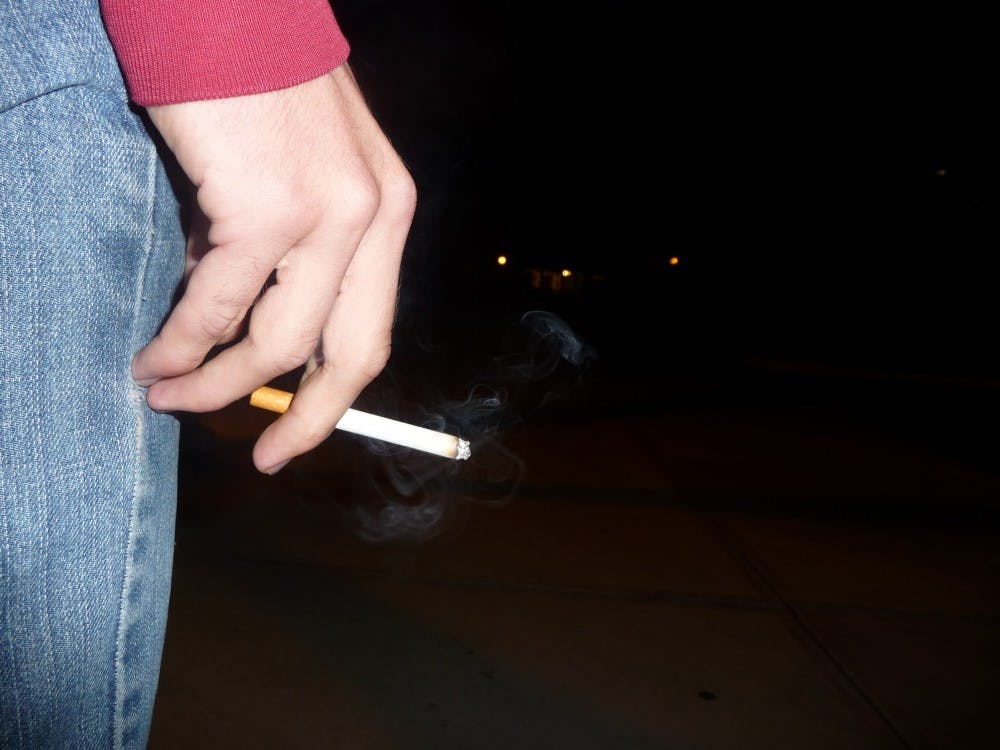Before the end of this semester, UP students, faculty and staff who smoke may need to think twice before lighting up.
Due to widespread concern about UP’s smoking policy among faculty, students and staff, the University is in the process of revamping the policy in terms of where UP community members are allowed to smoke cigarettes on campus.
According to UP’s current policy, smoking is prohibited “within 50 feet of any entrance to a building and facility and 20 feet from any window, opening or air intake to a building” and near athletics facilities and fields.
Jeff Rook, environmental health and safety officer, said University President Fr. Bill Beauchamp has received recommendations from the Presidential Advisory Committee (PAC) for Health and Safety that propose removing the 50 and 20- foot ban, and instead creating smoking-designated areas on campus. The changes have not been finalized.
“It’s not saying that it’s a no-smoking campus, it’s simply saying that there will be specific areas on campus where it’s going to be allowed,” Rook said. “We felt it was a difficult process to move to a non-smoking campus and we want to make sure that people who do smoke have a safe place.”
The University’s attitude toward smoking has changed from past years. In 2009, the administration proposed banning on-campus smoking, but ASUP Senate rejected this proposal by defeating a resolution that supported the smoking ban.
According to Rook, who is also the appointed chair of the PAC for Health and Safety, the recommendations outlined six different spots on campus where people would be allowed to smoke. Three areas would be in each of the residence hall quads, and the other three would be located behind Bauccio Commons and St. Mary’s Student Center and by the main parking lot between the Mago Hunt Center and the Clark Library.
“This helps us keep the air clean for those who don’t smoke, that don’t want to walk to class behind someone that’s walking to class the entire way smoking,” he said. “It keeps the areas outside of our buildings cleaner because there are less cigarette butts being laid around.”
Freshman Jo Green doesn’t think these locations would be very disruptive to her smoking.
“Fifty feet from a building could be anywhere, but as long as there’s somewhere to do it,” Green said.
However, sophomore Hannah Chandler, also a smoker, said she thinks smoking isn’t an issue at UP.
“It’s a good idea, but I don’t think it’s a problem,” she said. “For the most part I think people who smoke here are pretty respectful.”
Rook said the PAC’s recommendation to change the smoking policy came about from many complaints from students, faculty and staff about people smoking right outside buildings, concern about excessive amounts of cigarette butts littering the campus and Resolution 13-09 from last spring’s ASUP Senate, which recommended restricting the number of smoking areas on campus.
“I hate to say it, but the smokers kind of brought it on themselves, or at least some people that smoke brought it upon themselves for everyone because they weren’t being courteous to everybody else,” Rook said.
Senior Aisha Vandervelde, a non-smoker, is often annoyed by smokers around UP.
“It bothers me when I walk by Franz and I inhale a lot of smoke,” she said. “Personally I think (these changes) are nice. It’s better for the non-smokers but it’s harder for the smokers.”
However, Chandler said smokers shouldn’t have to look like villains because of their choice to smoke.
“There’s already a stigma that smokers are bad, and I think people are making a big deal out if it,” she said.
Rook said UP needs help from all its community members to make sure the rules are followed.
“Public Safety is not going to be the smoking police,” he said. “We’re really relying on everybody to help make this work.”
Gerald Gregg, director of Public Safety, said he expects the transition from the old policy to the new to be smooth once people understand the new rules.
“I’m quite sure that all the folks who want to smoke, once we figure out the new program, they’ll be on board with it,” Gregg said.








